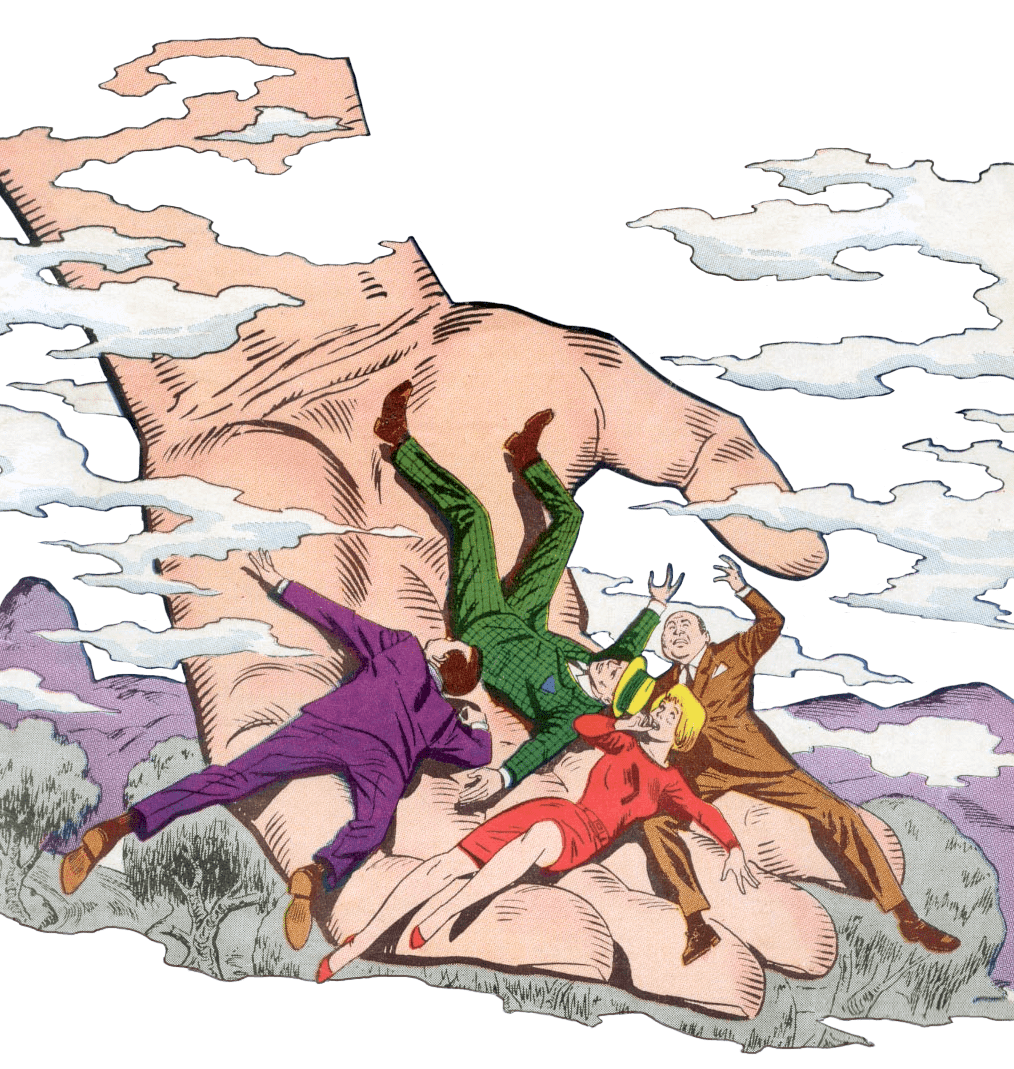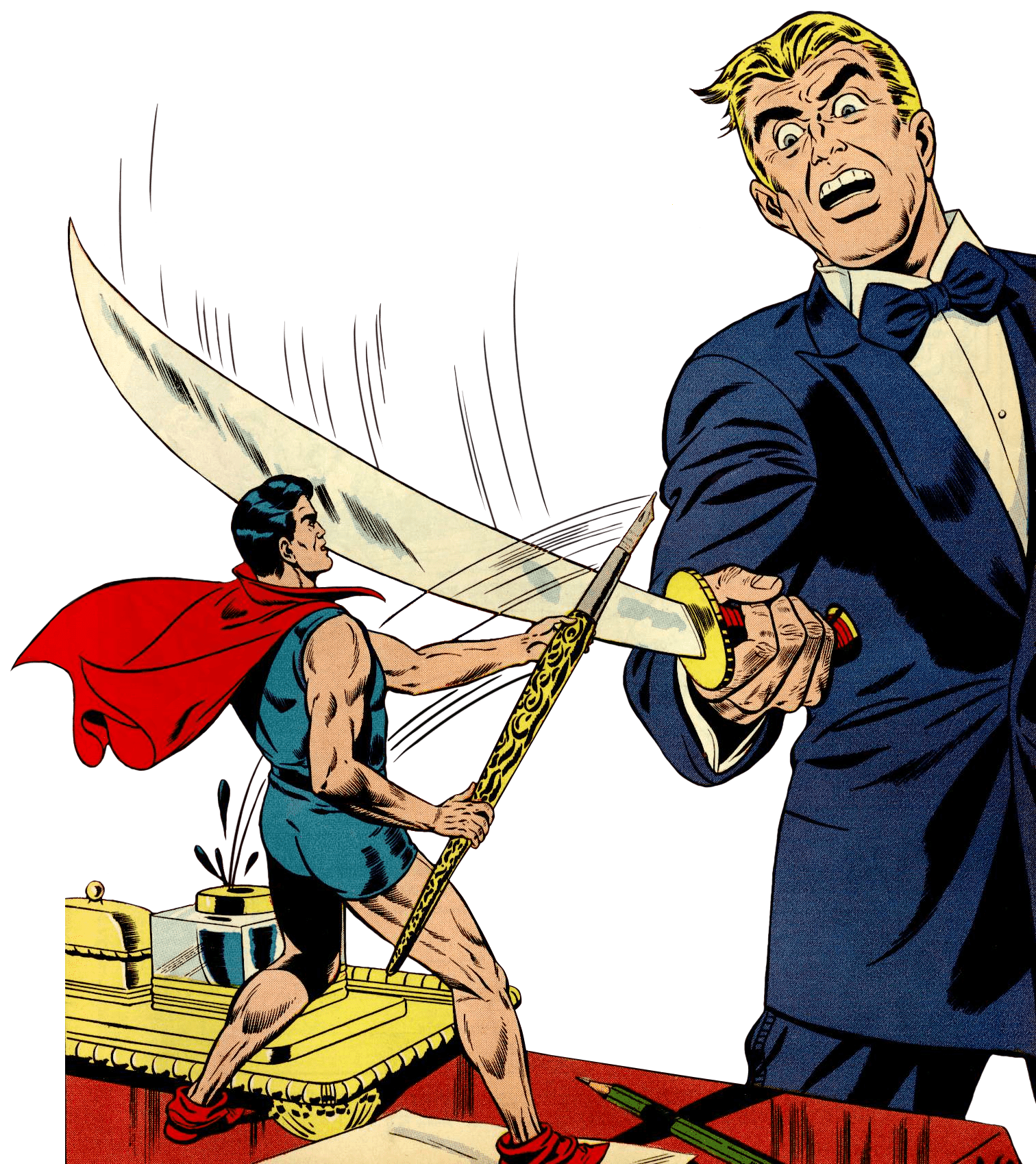Challenges, Contests, and Conflicts
We’ve talked about the four actions (create an advantage, overcome, attack, and defend) and the four outcomes (fail, tie, succeed, and succeed with style). But in what framework do those happen?
Usually, when you want to do something straightforward—swim across a raging river, hack someone’s cell phone—all you need to do is make one overcome action against a difficulty level that the GM sets. You look at your outcome and go from there.
But sometimes things are a little more complex.
Challenges
A challenge is a series of overcome and create an advantage actions that you use to resolve an especially complicated situation. Each overcome action deals with one task or part of the situation, and you take the individual results together to figure out how the situation resolves.
To set up a challenge, decide what individual tasks or goals make up the situation, and treat each one as a separate overcome roll.
Depending on the situation, one character may be required to make several rolls, or multiple characters may be able to participate. GMs, you aren’t obligated to announce all the stages in the challenge ahead of time—adjust the steps as the challenge unfolds to keep things exciting.
The PCs are the crew of a ship caught in a storm. They decide to press on and try to get to their destination despite the weather, and the GM suggests this sounds like a challenge. Steps in resolving this challenge could be calming panicky passengers, repairing damaged rigging, and keeping the ship on the right heading.
Contests
When two or more characters are competing against one another for the same goal, but not directly trying to hurt each other, you have a contest. Examples include a car chase, a public debate, or an archery tournament.
A contest proceeds in a series of exchanges. In an exchange, every participant takes one overcome action to determine how well they do in that leg of the contest. Compare your result to everyone else’s.
If you got the highest result, you win the exchange—you score a victory (which you can represent with a tally or check mark on scratch paper) and describe how you take the lead. If you succeed with style, you mark two victories.
If there’s a tie, no one gets a victory, and an unexpected twist occurs. This could mean several things, depending on the situation—the terrain or environment shifts somehow, the parameters of the contest change, or an unanticipated variable shows up and affects all the participants. The GM creates a new situation aspect reflecting this change and puts it into play.
The first participant to achieve three victories wins the contest.
Conflicts
Conflicts are used to resolve situations where characters are trying to harm one another. It could be physical harm (a sword fight, a wizard’s duel, a battle with laser blasters), but it could also be mental harm (a shouting match, a tough interrogation, a magical psychic assault).
Setting the Scene
Establish what’s going on, where everyone is, and what the environment is like. Who is the opposition? The GM should write a couple of situation aspects on sticky notes or index cards and place them on the table. Players can suggest situation aspects, too.
The GM also establishes zones, loosely defined areas that tell you where characters are. You determine zones based on the scene and the following guidelines:
Generally, you can interact with other characters in the same zone—or in nearby zones if you can justify acting at a distance (for example, if you have a ranged weapon or magic spell).
You can move one zone for free. An action is required to move if there’s an obstacle along the way, such as someone trying to stop you, or if you want to move two or more zones. It sometimes helps to sketch a quick map to illustrate zones.
Conflicts: the 30-second version
- Set the scene.
- Determine turn order.
- Start the first exchange.
- On your turn, take an action.
- On other people’s turns, defend against or respond to their actions as necessary.
- At the end of everyone’s turn, start a new exchange or end the conflict.
Thugs are attacking the characters in a house. The living room is one zone, the kitchen another, the front porch another, and the yard a fourth. Anyone in the same zone can easily throw punches at each other. From the living room, you can throw things at people in the kitchen or move into the kitchen as a free action, unless the doorway is blocked. To get from the living room to the front porch or yard requires an action.
Determine Turn Order
Your turn order in a conflict is based on your approaches. In a physical conflict, compare your Quick approach to the other participants’—the one with the fastest reflexes goes first. In a mental conflict, compare your Careful approach—attention to detail will warn you of danger. Whoever has the highest approach gets to go first, and then everyone else goes in descending order. Break ties in whatever manner makes sense, with the GM having the last word.
GMs, it’s simplest if you pick your most advantageous NPC to determine your place in the turn order, and let all your NPCs go at that time. But if you have a good reason to determine turn order individually for all your NPCs, go right ahead.
Exchanges
Next, each character takes a turn in order. On their turn, a character can take one of the four actions. Resolve the action to determine the outcome. The conflict is over when only one side has characters still in the fight.



